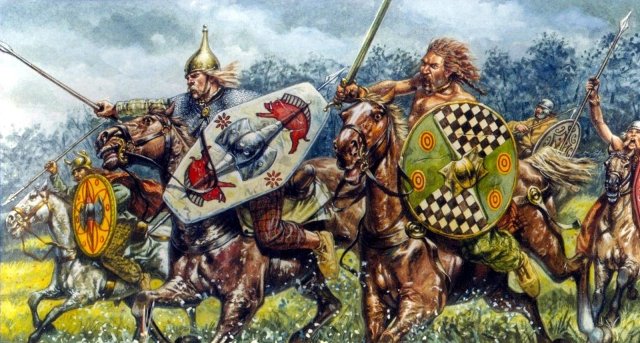
We’re heading into the wilds of Caledonia in this week’s post.
I wanted to discuss a topic that is often neglected although it is very interesting: the Picts and Pictish art.
As I’ve been packing for a move, I discovered some of my old photos from my days in St. Andrews, Scotland. I came across a packet of prints from an outing with some of my MLitt colleagues to visit Pictish sites in Angus and Perthshire.
The main attraction for us was the wide array of ornate carvings on several Pictish gravestones, most of which are maintained by Historic Environment Scotland at the Meigle Museum which is itself an old school house on the A94 Coupar Angus to Forfar road (for those of you who are interested in visiting). This little museum is a true gem and well worth a visit.
Before looking at the carvings however, I suppose I should answer one simple (or not so simple) question. Who were the Picts?
In brief, they are the direct descendants of the Caledonii, the blanket name given to those tribes who lived in the lands north of the Firth of Forth.
We hear about the latter in relation to the Roman invasion of what is now Scotland by Agricola in AD 79. The action-packed movie Centurion, with Michael Fassbender, which came out in 2010, deals with Agricola’s operations north of the Firth of Forth and the presumed disappearance of the Ninth Legion. In the film, the Caledonii/Picti are portrayed as a society run by a warrior elite, the members of which paint themselves with blue woad. The film is very entertaining, if not violent, but the best thing is that it was filmed where much of the history presumably took place. It’s worth a gander for that, if anything.
But were the Picts simply a mass of blue barbarians as they’re so often portrayed? Likely not.
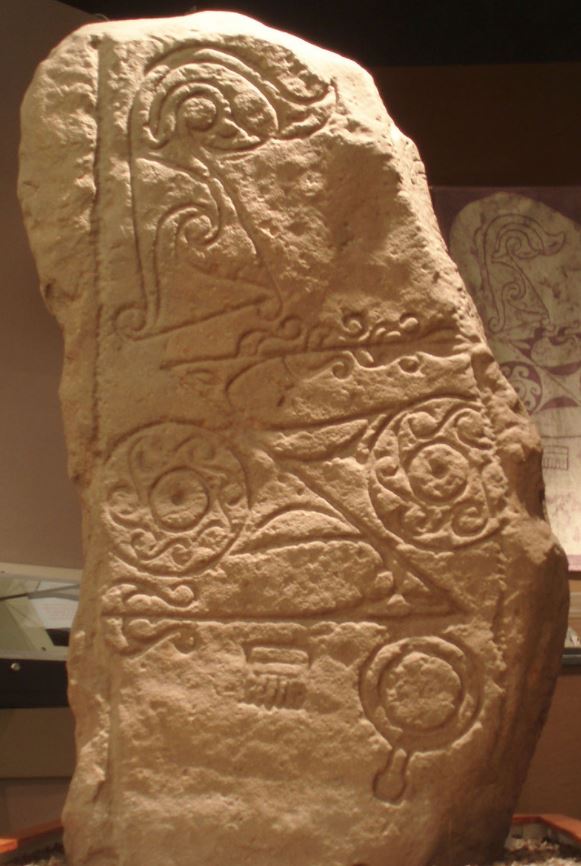
The Dunnichen Stone with typical Pictish symbols
Contrary to the usual portrayal, the Picts were not simply one enormous group living and fighting north of the Antonine Wall. They were indigenous Celts and the term ‘Picti’, like ‘Caledonii’ or ‘Maeatae’ is more of a blanket term that included approximately twelve Celtic tribes north of the Forth and Clyde rivers. These were recorded by the Roman geographer Ptolemy in the 2nd century AD. Because of the military threat posed by Imperial Rome, the Celts in the area amalgamated into two larger groups. The Caledonii and the Maeatae and, in turn, came to be later referred to as ‘Picti’.
The tribal federation survived the various Roman incursions (the last one being the Severan invasion of Scotland in the early 3rd century – the setting for Warriors of Epona). As a result the Picts were able to develop mechanisms of kingship and by the 6th century there was a Pictish kingdom.
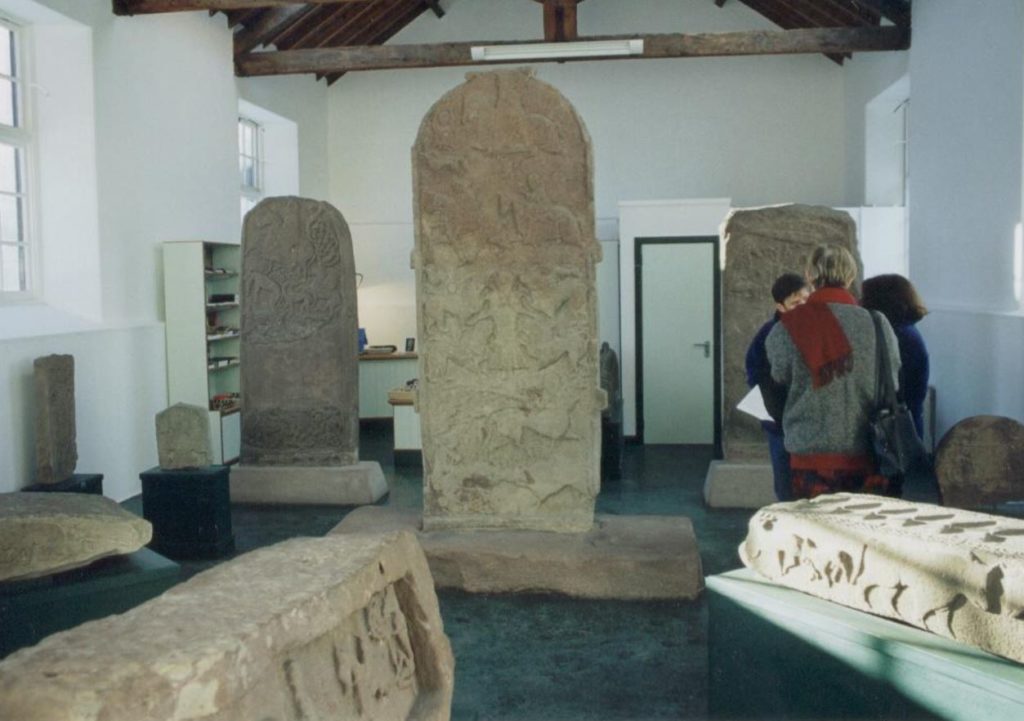
Meigle Museum – colleagues chatting with the curator
In Pictish art, there are certain recurrent symbols such as those found on the Aberlemno stone including the ‘serpent’, the ‘double-disc’, the ‘crescent’ and the ‘Z-rod’. When I visited the Meigle museum I was struck immediately by the amount of Christian imagery, having had in my mind typical images of paganism when it came to the Picts. The presence of crosses and other Christian images is due to the conversion of the Picts to Christianity after the Irish abbot of Iona, St. Columba, ventured into ‘Pictland’ in AD 565. Columba met the Pictish king, Bridei son of Maelchon in a fortress near the River Ness and thus began the conversion of the Picts, a process that was complete by about AD 700.

Artist impression of St. Columba converting the Picts
The Pictish symbol stones are one of the most important sources for information about the Picts, and the symbols, common from one end of Scotland to the other, were widely understood by all the tribes. Now, however, we know very little of their actual meaning except that they functioned as memorial stones or territorial boundary markers.
The church yard at Meigle contained a large number of Pictish stones, implying that Meigle was itself a very important centre of burial for the Pictish church and under the patronage of the kings of the Picts. Eventually however, Pictish rule, which had survived the onslaught of Rome in Late Antiquity, was taken over by the Gaelic-speaking settlers of Dalriadia (or ‘Dal Riata’ – modern Argyll) which led to the reign of the Scots King, Kenneth mac Alpin and his subsequent dynasty.
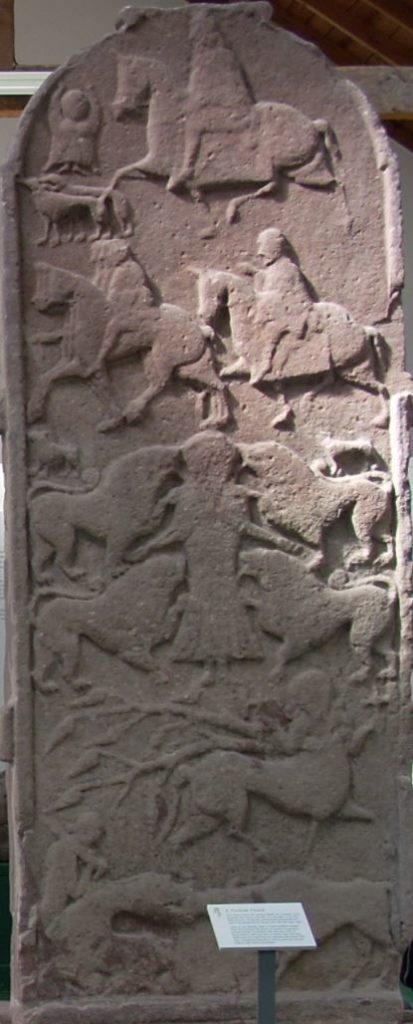
The ‘Vanora Stone’ – Cross-slab no.1 The Death of Queen Vanora
Before we bid farewell to the Picts however, there is an interesting Arthurian connection with Meigle and one of the Pictish stones (cross-slab no.1).
On entering the graveyard at Meigle, there is a grassy mound known as Vanora’s Grave. Local tradition has it that Vanora was actually Queen Guinevere, the wife of Arthur. Vanora was abducted by the Pictish king, Mordred, and held captive near Meigle. When she was returned to her husband after this forced infidelity, she was sentenced to death by being torn apart by wild beasts, hence the scene of Vanora’s death on the back of cross-slab no.1. Her remains were buried at Meigle.
Tradition also says that Vanora (and Guinevere for that matter) was barren and it is believed that any young woman who walks over her grave risks becoming barren herself. True or not, this is yet another interesting anecdote of history and legend.
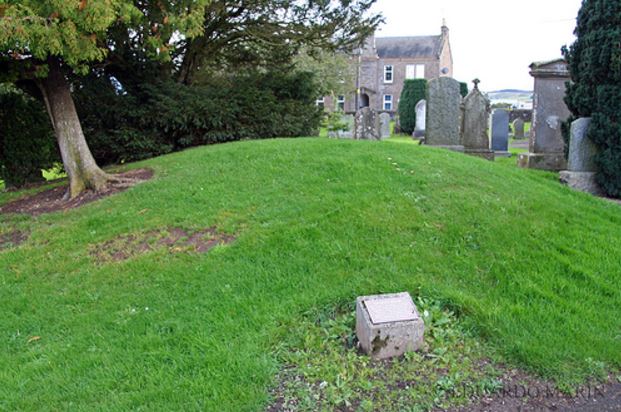
Vanora’s Grave
I hope you’ve enjoyed this post. Once more, if you ever get the chance to visit Meigle’s museum and some of the stones in the surrounding area, it’s well worth it.
Thank you for reading!
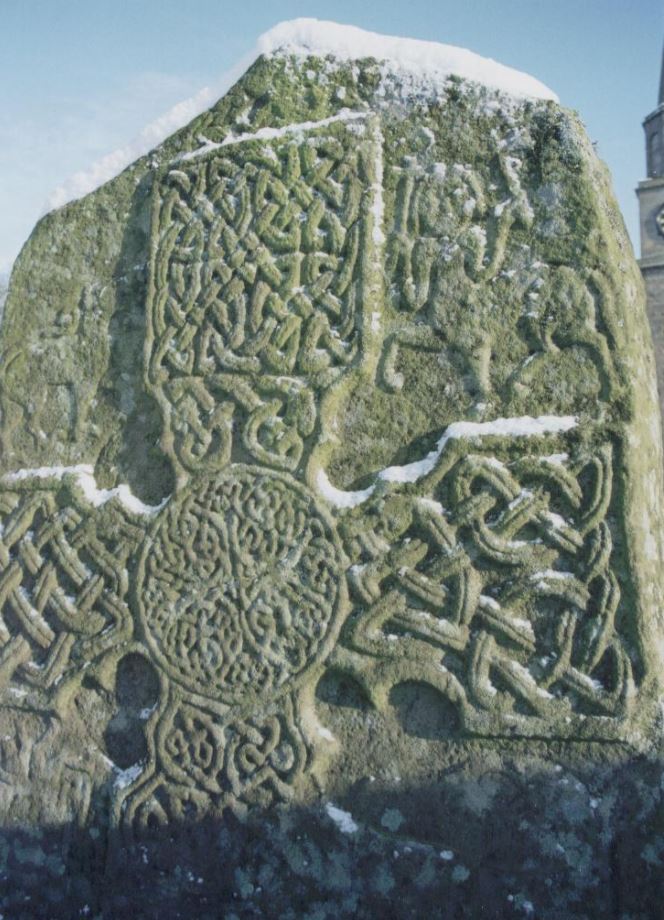
One of the Aberlemno stones


